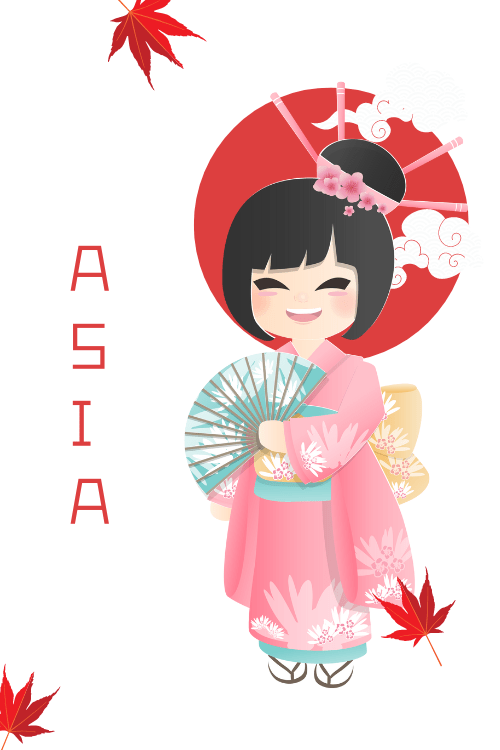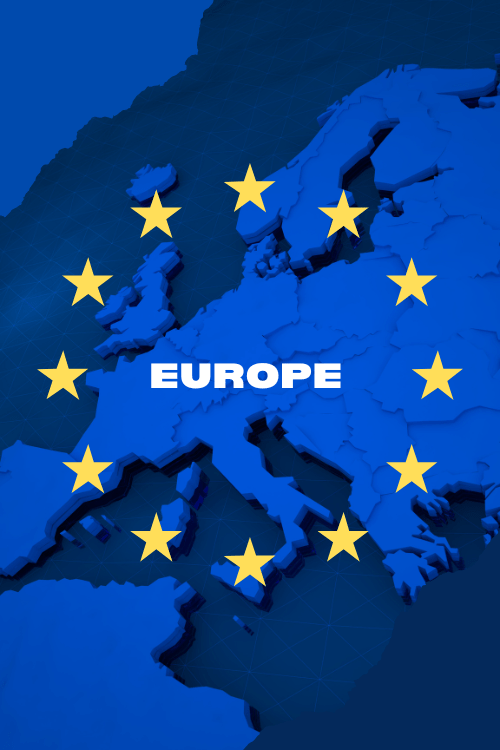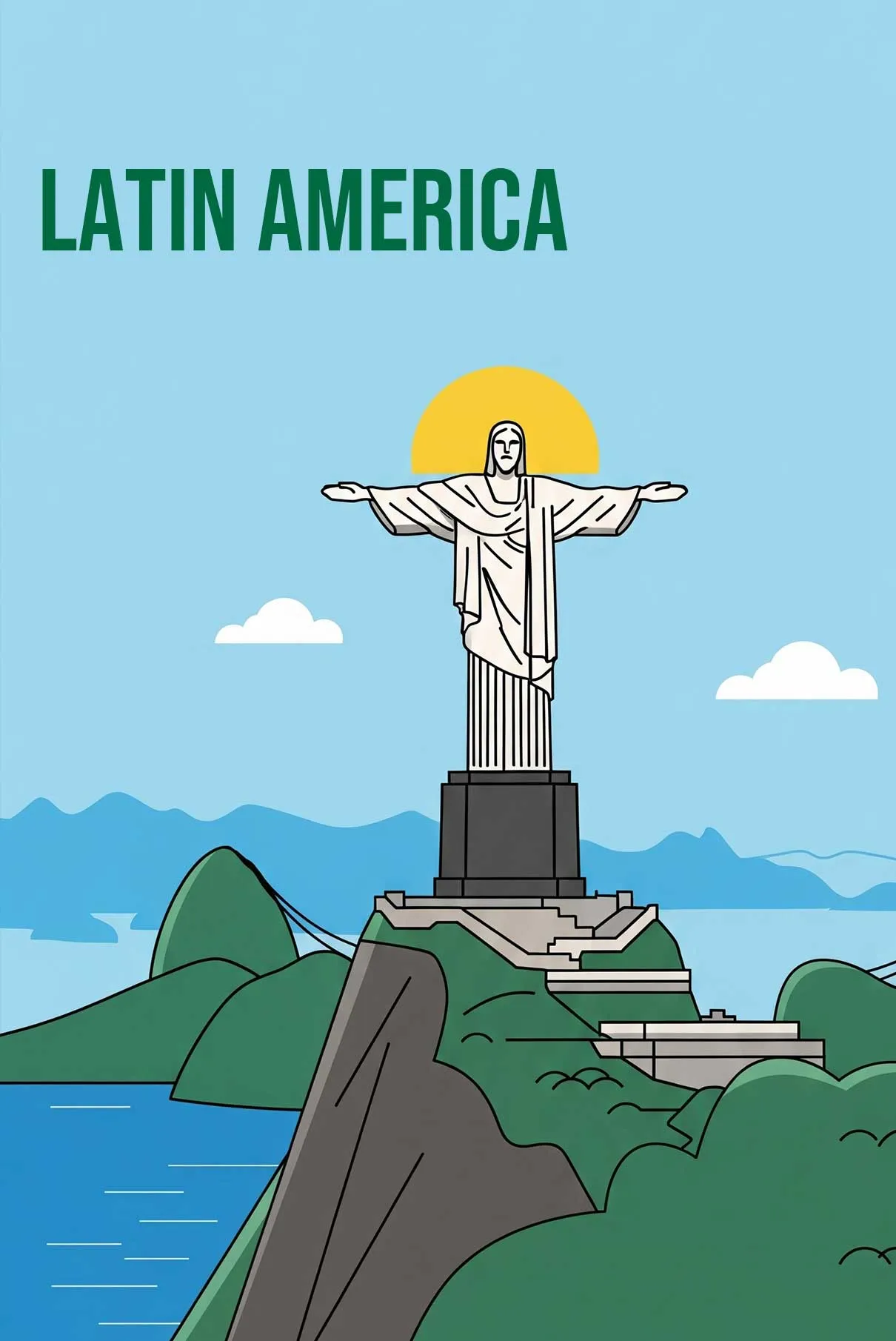eSIM Denmark, Best Time To Visit
The Best Time to Visit Denmark: A Seasonal Guide
Denmark’s charm shifts with the seasons, and honestly, that’s what makes choosing when to visit both exciting and, well, a bit overwhelming.
You’re probably here because you’re trying to figure out whether to chase those endless summer days everyone talks about, or maybe you’re curious about experiencing that famous Danish hygge during the darker months.
Here’s the thing: there really isn’t a “wrong” time to visit Denmark, but there’s definitely a right time for you and what you’re hoping to experience.
Whether you’re drawn to golden beaches that stretch for miles, autumn foliage that looks like something out of a fairy tale, or the intimate warmth of a Christmas market glowing against the winter darkness,
Denmark delivers something magical in every season. But let’s be honest, you want specifics.
You want to know when the weather cooperates, when the crowds thin out, when your budget gets the biggest bang, and when you’ll have those moments that make you understand why people fall in love with this small Nordic country.
Find Your Perfect Denmark Trip!
Answer a few questions to discover the best time for your visit to this charming Nordic country.
Peak Season: Summer (June–August)
Best For: Outdoor adventures, festivals, and soaking up that legendary midnight sun
Summer in Denmark is… well, it’s a revelation if you’ve never experienced it before.
From June through August, this country transforms into something almost Mediterranean in spirit, even if the temperatures stay refreshingly mild. We’re talking about 59–68°F (15–20°C)—perfect for walking around all day without breaking a sweat, but warm enough that you’ll actually want to spend time outdoors.
But here’s what really gets you: the light.
Up to 18 hours of daylight means you can have dinner at 9 PM and still need sunglasses.
It’s disorienting at first, your body clock might protest for a few days, but then you realize you’ve got all this extra time to explore. You start understanding why locals seem so energetic during summer; they’re making up for those short winter days.
Why Summer Absolutely Shines
Those long days create this sense of endless possibility that’s hard to describe until you experience it.
Copenhagen’s harborfronts buzz with an almost electric energy—people cycling everywhere, outdoor cafes packed until late evening, and the canals reflecting light well into what should be nighttime. Meanwhile, Jutland’s cycling routes stretch under skies that seem to go on forever, and you’ll find yourself taking “just one more detour” because there’s still light left in the day.
Don’t miss the white-sand beaches of Bornholm—and yes, Denmark actually has white-sand beaches that rival anything you’d find in warmer climates. The water might be brisk, but the beaches themselves are stunning. Then there’s Skagen, Denmark’s northernmost tip, where the windswept beauty feels almost otherworldly. Standing there where two seas meet, you’ll understand why artists have been drawn to this place for centuries.
The festival scene during summer is… intense, in the best possible way. June kicks off with the iconic Roskilde Festival, and if you’re even remotely interested in music, this is a pilgrimage worth making. It’s not just about the bands (though they’re incredible)—it’s about this temporary city that springs up, full of people from around the world sharing this collective experience. July brings Aarhus’ vibrant street performances, where the entire city center becomes a stage. By August, coastal towns are celebrating summer’s end with seafood feasts and bonfires on the beach, and there’s something bittersweet and beautiful about these end-of-season celebrations.
If you’re traveling with kids, summer is when Denmark really shows off. Tivoli Gardens—which actually inspired Disneyland, though it’s older and arguably more charming—operates with extended hours. The gardens at night, lit up and full of families enjoying rides and performances, feel genuinely magical. And Legoland is in full swing, which matters more than you might think if you’re trying to keep young travelers happy.
A Reality Check on Crowds
Let’s be completely honest here: summer is peak tourist season, and you’ll feel it. Popular spots like Nyhavn (those colorful houses everyone photographs) or Kronborg Castle (yes, the actual Hamlet castle) can feel genuinely busy. Not overwhelming like some European destinations, but busy enough that you’ll want to arrive early or late in the day for photos without crowds.
Book your accommodations early—especially in Copenhagen, where summer hotel prices can make your eyes water. But here’s a local secret: consider day trips to lesser-known islands like Møn for quieter beaches and dramatic chalk cliffs. You get the summer weather and long days, but with a fraction of the crowds.
Shoulder Seasons: The Sweet Spots of Spring (March–June) & Autumn (September–October)
Spring: Blossoms, Mild Weather, and Budget-Friendly Magic
Spring might be Denmark’s best-kept secret, and I’m almost hesitant to share this because the locals seem to prefer that tourists stick to summer. But March through June offers this perfect combination of awakening beauty, reasonable prices, and manageable crowds that’s hard to beat.
As the frost melts—and Danish winters can be properly frosty—the country awakens with an enthusiasm that’s infectious. Cherry blossoms in Copenhagen’s Sankt Hans Torv create these tunnel-like canopies over cobblestone streets. Wildflowers start appearing along Møns Klint’s dramatic chalk cliffs, creating this gorgeous contrast between white limestone and colorful blooms.
The weather during spring requires a bit of strategy. Temperatures rise from a chilly 50°F (10°C) in March to a genuinely pleasant 70°F (21°C) by June, but—and this is important—rain showers are common and often come out of nowhere. Pack layers and a decent rain jacket, because Danish spring weather can shift from sunny and mild to gray and drizzly within an hour. But here’s the thing: those skies often clear just as quickly, revealing some of the clearest, most beautiful days you’ll see all year.
Why Spring Visits Work So Well
Fewer crowds mean you can actually experience places instead of just seeing them. The Louisiana Museum of Modern Art—which has this incredible setting on the coast north of Copenhagen—becomes a place where you can contemplate the art and the sea views without jostling for position. Odense’s fairy-tale museums, celebrating Hans Christian Andersen’s legacy, feel intimate rather than touristy.
Budget-wise, March through May offers some genuine relief. Flight prices drop significantly compared to summer, and hotels that charge premium rates in July might be 30-40% cheaper in April. You’re essentially getting peak Denmark experience at off-peak prices.
Autumn: Golden Foliage and Cozy Vibes That Actually Deliver
Autumn in Denmark—September through October—is legitimately a painter’s dream, though that might sound cliché until you see Jutland’s forests blazing with amber and crimson. The air carries this incredible scent of apples from Funen’s orchards, and there’s something about the quality of light that makes even ordinary moments feel significant.
Temperatures cool to a crisp 50–59°F (10–15°C), with mornings that are perfect for hiking or kayaking in Silkeborg’s lakes. You’ll want layers, but it’s that pleasant kind of cool where you feel energized rather than cold.
The harvest festivals during autumn showcase Denmark in a way summer tourists never see. You can sample local wines in Zealand—yes, Denmark makes wine now, and some of it’s quite good—or join apple-picking traditions in Funen that feel authentically local rather than performed for visitors.
Cultural attractions during autumn offer this wonderful sense of calm discovery. Walking through Copenhagen’s Nyhavn or exploring Aarhus’ art galleries without summer crowds means you can take your time, have actual conversations with locals, and discover details you’d miss when rushing between must-see sights.
Winter (November–March): Cozy Hygge and Quiet Magic That Might Surprise You
Danish winters challenge your preconceptions about cold-weather travel. Yes, it’s cold—32–41°F (0–5°C)—and yes, it’s dark, with only 6-7 hours of daylight in December. But dismissing Denmark in winter means missing something genuinely special: a culture that has turned seasonal darkness into an art form.
This is where hygge stops being a marketing buzzword and becomes something you actually experience. Picture crackling fireplaces in centuries-old buildings, steaming gløgg (mulled wine) that warms you from the inside out, and fairy lights strung across cobblestone streets that create this intimate, almost conspiratorial atmosphere.
Why Winter Actually Works
Christmas markets in Denmark aren’t just seasonal attractions—they’re cultural experiences. Copenhagen’s Tivoli Gardens, open until December 23rd, transforms into something that makes other winter destinations look like they’re trying too hard. The lights, the performances, the food stalls serving everything from æbleskiver (Danish pancake balls) to proper Danish pastries—it all feels organic rather than manufactured.
Aarhus and Odense host more intimate markets where you’ll find handcrafted gifts that locals actually buy for each other, not just tourist souvenirs. The spiced treats, the warm drinks, the conversations that happen naturally when everyone’s huddled together against the cold—this is Denmark at its most genuine.
Indoor culture during winter becomes a refuge rather than a consolation prize. The Blue Planet Aquarium offers this otherworldly escape, while the National Museum of Denmark lets you delve into Viking history when the weather’s too harsh for outdoor exploration. And honestly, there’s something perfect about learning about Danish history while snow falls outside.
Budget-wise, winter delivers real savings. Hotels drop prices by 20-30%, and you’ll find genuine deals in cities like Aalborg or Esbjerg that might be expensive during peak season. Winter is also when you’ll have the most authentic interactions with locals, partly because tourism slows down and partly because the season naturally encourages longer conversations over coffee and shared spaces around heaters.
Embracing the Darkness
Those short winter days require a mindset shift, but Danes have essentially solved this puzzle through hygge. It’s not just about candles and wool blankets—though those help—it’s about slowing down enough to appreciate intimate moments. Long conversations over coffee, extended dinners by candlelight, reading in warm cafes while snow falls outside—winter in Denmark teaches you why rushing through travel experiences often means missing their essence.
Month-by-Month Highlights: Your Planning Calendar
June brings the summer solstice with nearly 24-hour daylight in northern Denmark, outdoor concerts that take advantage of those long evenings, and the official start of beach season. This is when Denmark feels most alive, most energetic, most ready to show off.
July delivers the warmest temperatures—up to 68°F (20°C)—along with peak crowds and the legendary Roskilde Festival. If you can handle the bustle and book well in advance, this month offers Denmark at its most vibrant.
August provides mild weather perfect for coastal walks, harvest celebrations that showcase local food culture, and that bittersweet end-of-summer atmosphere that can be genuinely moving.
September transforms the landscape with golden foliage, wine festivals that highlight Denmark’s emerging viticulture, and blissfully fewer tourists competing for photo spots and restaurant tables.
December brings Christmas markets, Tivoli’s magical winter lighting, and those frosty walks along Copenhagen’s harbor that somehow feel romantic rather than merely cold.
This “Invisible” SIM Card is Saving Ordinary Travellers Hundreds on International Trips
You see those travelers glide through airport arrivals – calm, internet connected, already booking their ride-share while others are frantically searching for Wi-Fi or queuing at chaotic phone kiosks…
What’s their secret?
When you travel overseas you’re either paying insanely high data-roaming fees from your home carrier or frantically hunting down some local SIM card kiosk the second you land, wasting precious vacation time just trying to get your phone working.
One leaves you with a bill that leaves a sour taste in your mouth after a great trip. The other eats into your actual holiday, causing stress and hassle when you should be exploring.
But what if I told you that ordinary travelers just like you have figured out a way to completely bypass this frustrating experience?
They’re using something most travelers don’t even know exists… a kind of “invisible” SIM card technology that you likely already have on your phone right now.
And it’s allowing them to tap into super-cheap, high-speed data anywhere in the world… without swapping cards, without visiting a store, and without getting ripped off.
It’s called an eSIM.
And eSIM4.com makes getting one simple.
Here’s how it works:
- Step 1: Go to eSIM4.com.
- Step 2: You pick your destination, choose a data plan.
- Step 3: We send you a simple QR code. You scan it with your phone’s camera.
Your new travel SIM is installed in under 3 minutes!
The moment your plane’s wheels hit the tarmac overseas? Your phone instantly connects to a fast, local network.
No queues. No fumbling with tiny plastic chips. No nasty bill shock.
Just seamless, affordable data letting you use Google Maps, WhatsApp, Uber, Instagram… whatever you need… right away.
This is how travel is supposed to work. And it’s saving people like you hundreds of dollars on a single trip.
Stop letting the big phone companies treat your travel budget like their personal ATM. Stop wasting your valuable vacation time being disconnected or stressed.
Join the smart travelers who’ve already made the switch.
CLICK HERE TO GET STARTEDPro Tips for Different Types of Travelers
For Families
June through August remains your best bet, despite the crowds and higher prices. Tivoli operates extended hours, beaches are swimmable (well, for brave children), and school holidays align with Denmark’s peak season for good reason. The extra daylight hours also help with jet lag and give you more options when kids get restless.
For Budget Travelers
March through May or November through February offer the best value proposition. You’ll save significantly on accommodations, flights are cheaper, and fewer crowds mean you’re not competing for expensive restaurant tables. The trade-off is weather unpredictability, but proper preparation solves most weather-related challenges.
For Couples
May offers cherry blossoms and that perfect spring awakening romance, while December provides Christmas market intimacy and hygge-filled evenings that naturally encourage close connection. Both months create natural opportunities for those travel moments that become cherished memories.
Hidden Gems by Season
Spring reveals Møns Klint’s wildflowers creating dramatic displays against white chalk cliffs, or Legoland in May when crowds are manageable but weather’s improving. You’ll feel like you’re discovering secrets rather than checking off tourist must-sees.
Summer opens up possibilities like the Faroe Islands—just a short flight from Denmark—for dramatic landscapes that few summer visitors consider. It’s technically Denmark territory, but feels like another world entirely.
Autumn showcases places like Ribe, Denmark’s oldest town, where medieval architecture against golden leaves creates this perfect historical atmosphere. The smaller crowds mean you can actually imagine what life might have been like centuries ago.
Winter offers experiences like Hvide Sande for storm-watching on the North Sea, where winter weather becomes entertainment rather than inconvenience. There’s something thrilling about watching North Sea storms from a warm cafe.
Budget Hacks That Actually Work
During winter, Copenhagen hotels competing for limited tourists offer deals that would be impossible during summer. Combine hotel savings with the Copenhagen Card for free transport and attraction access, and you’re looking at significant overall savings.
For shoulder seasons, booking DSB trains early provides discounts that add up, especially if you’re planning to explore beyond Copenhagen. Danish trains are efficient and comfortable, making them preferable to rental cars for most itineraries.
Packing Like Someone Who Understands Danish Weather
Summer requires light layers plus a rain jacket, because those sudden showers will happen. Danes always carry small umbrellas or light rain gear, even on sunny days, and you should too.
Winter demands thermal layers, waterproof boots that actually keep feet dry, and at least one cozy sweater for those hygge cafes where you might end up spending entire afternoons.
The key with Danish weather is accepting its unpredictability rather than fighting it. Locals dress in layers and always prepare for conditions to change, and following their lead will keep you comfortable regardless of when you visit.
Your Denmark Decision
Denmark’s magic lies in its ability to delight year-round, but in completely different ways depending on when you arrive. Summer dazzles with festivals and beaches that take advantage of those incredible light-filled days. Spring and autumn offer peace and beauty without the crowds, letting you experience Danish culture at a more intimate pace. Winter wraps you in hygge and teaches you why Danes have elevated cozy to an art form.
The truth is, there’s no universally “best” time to visit Denmark—only the best time for what you’re hoping to experience and the trade-offs you’re willing to accept. Whether you choose extended daylight and festival energy, budget-friendly shoulder seasons with unpredictable weather, or winter’s intimate charm with limited daylight, you’ll find a country that’s equal parts historic, modern, and heartwarmingly welcoming.
Ready to plan your Danish adventure? Let the seasons guide your decision, but more importantly, let your own travel style and priorities make the choice for you. Denmark will be wonderful whenever you arrive—it’ll just be wonderful in its own seasonal way. 🇩🇰✨
And if you’re planning to stay connected during your Danish adventure, remember that eSIM technology from providers like esim4.com can keep you connected without the hassle of changing physical SIM cards or dealing with expensive roaming charges. Because let’s be honest—you’ll want to share those midnight sun photos or cozy hygge moments as they happen.









